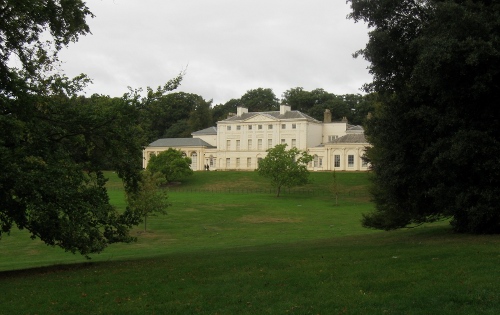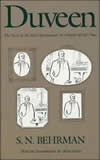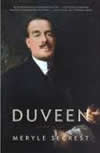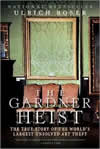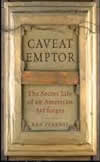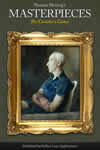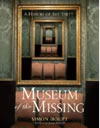On Saturday night, February 23, 1974, Vermeer's Guitar Player was stolen from the Kenwood House, in Hampstead, London.
A museum guard heard the crash of metal against metal followed by the sound of broken glass. When he arrived, he discovered that someone had smashed through the shutters and steel-barred ground floor window of the museum with a sledgehammer, grabbed the painting off the wall and, despite a ten-foot wall that had to be scaled, the thief had escaped even before an alarm sounded at the Hampstead police station. Telephone lines had been cut to slow down any pursuit. Ironically, security at the Kenwood House had been intensified two years earlier after two paintings by the Italian landscape master, Francesco Guardi, were stolen. Following the heist of The Love Letter two years earlier, it was evident that Vermeer's art was destined to become a prime target for thieves.
British security clamped on tight land and sea security to prevent the work from being smuggled out of the country, and police dogs were brought into search the Kenwood House grounds.
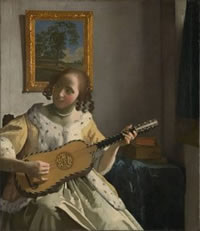
Johannes Vermeer
c. 1670–1673
Oil on canvas, 53 x 46.3 cm.
Iveagh Bequest, London
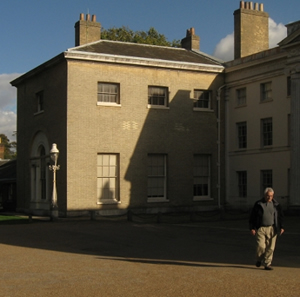
In recent years, Vermeer's Guitar Player hangs on the wall to the right of the lower story, illuminated window.
"We are looking for either a master thief or a madman," said a spokesman for Scotland Yard. "It could be the work of someone who does not know what he has done or has no idea of the value of what he has got. But so far we think it is a master thief who has planned the operation over a number of years." The American detective, Robert Volpe, specializing in the recovery of stolen artworks said the thief must have had in mind a specific buyer. "What's this guy going to do, go up to a dealer and say 'Hey, I'm looking to sell my Vermeer?'"
One leading London art dealer, Hugh Leggatt, said Vermeer's Guitar Player is "so famous that it could not possibly be sold." Estimates of the painting's value ran as high as $4.5 million, but Leggatt commented that it "is really priceless ... of immense international artistic importance." The police and the museum both refused to say if the painting had been insured.
Scotland Yard had already stated it expected a ransom to be demanded since it was too famous to be sold on the open market.
The frame of The Guitar Player was soon found a half mile from the Kenwood House on Hampstead Heath. Because the glass had been smashed and the frame had suffered damage to one corner, authorities feared that the painting was damaged as well.
How was the frame discovered? The police dogs failed to pick up the scent of the frame, but strangely, a Romani Gypsy named Nella JonesAffectionately known as "witchie-poo," the work of Nella Jones was never presented as evidence in a court of law but is often the helped the police to resolve criminal problems. The clairvoyant "became" the person in the crime, feeling his fear and the pain, sometimes even falling ill with for the trauma of the crime. had tipped off the police about the location of the frame, and thus began a remarkable and fascinating story of clairvoyant assistance in solving several crime mysteries. Jones claimed that her mind suddenly focused on the whereabouts of the painting while she had been ironing clothes and idly watching television. She hurriedly sketched a map of the location in her vision and took it to the police, who were understandably skeptical. But, having no other lead, they followed her sketch. With this amazing find, Jones had inaugurated a relationship that would develop with authorities more and more over the years. She would spend the following twenty years helping them ensnare murderers and other serious offenders.
Television reporters soon began announcing the robbery; however, the image of the painting was not actually shown but rather only described to TV viewers because the company that held the rights to the color slide had demanded a £10 royalty for each use of the image. Both the BBC and ITV decided to save their money.
The police received several anonymous messages demanding ransom. Suspicion fell on terrorist organizations, above all the Irish Republican Army. One ransom note demanded that Dolours and Marion Price, who had been involved in an IRA bombing unit and who were in a British prison where they were serving life sentences, should be moved to an Irish prison.
Next, a man with a West Indian accent telephoned the evening of February 25 demanding a ransom of approximately $1.1 million in food to be distributed on the Caribbean island of Grenada, or else the painting would be destroyed. Grenada had received its independence from Britain only a month earlier but was in the grip of internal strife under the rule the Prime Minister Eric Gairy whose election had not been recognized as legitimate by opposition groups.
Scotland Yard connected the Patricia Hearst kidnapping to the inspiration for the theft of The Guitar Player pointing out that the theft occurred shortly after television news stories showing food distribution in California in response to the demand of Hearst's kidnappers, the Symbionese Liberation Army. In a public statement, British authorities immediately declared that no ransom would be paid.

The London Times received an envelope containing a strip of canvas cut from the back edge of the picture about an inch long and a quarter of an inch wide with a note, typed on thin blue paper that read: because the "capitalist society values its treasures more than humanity…we carry out our lunacy to the utmost extent [-] the painting will be burnt on St Patrick's night."Anthony Bailey, Vermeer: A View of Delft (New York: Holt Paperbacks, 2002), 236.
The newspaper columnist, Bernard Levin, wrote a moving plea in an open letter to the thieves describing how the girl's hands in the painting are placed, how the strings shimmer in musical motion, how the light falls, irreplaceably.
After yet another anonymous tip, the police successfully raced to recover The Guitar Player in a cemetery in Saint Bartholomew's in London's financial district, on May 7, 1974. A spokesman of Scotland Yard said "the painting was propped up against a gravestone, wrapped in newspaper and tied with a string." Although the painting showed signs of dampness, it was otherwise undamaged.
Although the IRA terrorist Rose DugdaleSean Driscoll, Heiress, Rebel, Vigilante, Bomber: The Extraordinary Life of Rose Dugdale (Dublin: Sandycove, 2024). was never charged in connection with stealing The Guitar Player, authorities believed she was responsible. Two months later, Dugdale would take part in a raid on Russborough House in County Wicklow, the home of Sir Alfred Beit in yet another assault on a precious Vermeer masterpiece.
† FOOTNOTES †
Thefts, forgeries & the Van Meegeren case
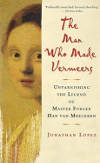 The Man Who Made Vermeers: Unvarnishing the Legend of Master Forger Han van Meegeren
The Man Who Made Vermeers: Unvarnishing the Legend of Master Forger Han van MeegerenJonathan Lopez
2009
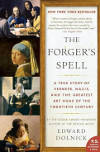 The Forger's Spell: A True Story of Vermeer, Nazis, and the Greatest Art Hoax of the Twentieth Century
The Forger's Spell: A True Story of Vermeer, Nazis, and the Greatest Art Hoax of the Twentieth CenturyEdward Dolnick
2009
